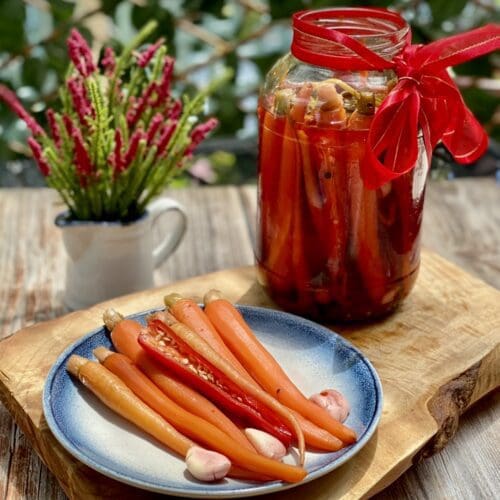
Pickled Carrots (spicy pickled Dutch carrots)
These spicy pickled carrots make for a tasty side dish or a healthy snack. Pickled with chillies, garlic, dill, coriander seeds & peppercorn
Ingredients
- 800 gm Dutch carrots (baby carrots) (NOTE 1)
- 3 large long red chillies (halved) (NOTE 2)
- 5 stems fresh dill
Pickle water
- 2½ cup white wine vinegar
- 2½ cup water
- 4 cloves garlic (crushed)
- ⅔ cup sugar
- 2 tsp dried chilli flakes
- 2 tsp whole coriander/cilantro seeds
- 2 tsp whole black peppercorns
- 3 tsp salt
Instructions
- Put all the ingredients for the pickle water into a saucepan, and place it over medium-high heat. Bring it to a boil then reduce the heat to medium-low and simmer for 10 minutes.
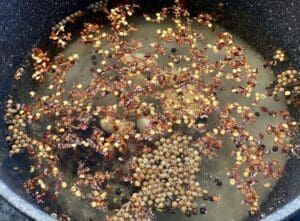
- Meanwhile, fill a separate large saucepan 2/3 full with water and bring it to a boil over high heat. Wash and peel (optional) the carrots, then trim their stems, leaving approximately 1cm on. Prepare a large bowl of iced water or just cold water.
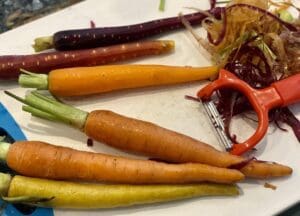
- Once the water is boiling, place in the carrots and blanch them for 1-2 minutes or if the carrots. Don't blanch for too long, as you want the carrot to maintain some of its crispiness.
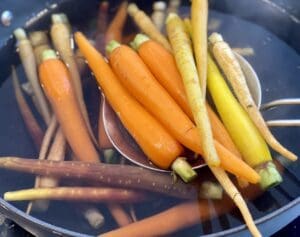
- Remove the carrots from the boiled water with a large slotted spoon or a strainer and plunge them into the iced water for 2 minutes, then drain the water from the carrots.
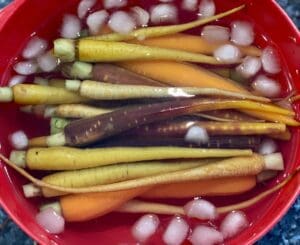
- Assemble the carrots nicely into a large 2kg/4.4lb sterilised jar, then push in the chillies into the jar near the glass for a nice presentation. Push the garlic and dill firmly over the top of the carrots. Carefully fill the jar with the hot pickle water (including its spices) all the way to the top so it covers the vegetables, then cover the jar with its lid.
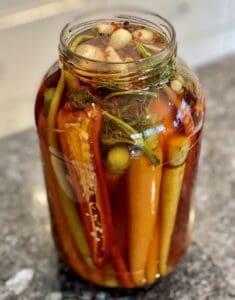
- Leave the pickles at room temperature until it's cool enough to touch, then transfer them to the fridge. Chill for 2 days before serving. These carrot pickles should keep for up to 3 months when stored in the fridge.
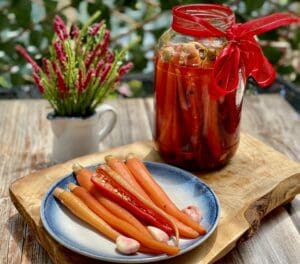
Notes
(NOTE 1) Carrots - I got excited seeing bunches of rainbow baby carrots, but don't make the same mistake and get these. Although they were still delicious, they're a bit too woody for pickling. Stick with Dutch carrots or use regular carrots (cut them into long sticks). I peeled the larger carrots and left the peel on the smaller ones.
(NOTE 2) Chillies - These pickles come out quite spicy, but the heat level depends on the chillies you have. Adjust the amounts of chillies in this recipe to suit your taste.
I've used a third-party application to calculate the calories and nutritional information, so please use this as an approximate guide only.
Cooking measurements are in Australian standard spoon and cup measurements. For specific details and conversions, visit our Australian Cooking Measurements page.
Nutrition
Serving: 1servingCalories: 75kcalCarbohydrates: 23gProtein: 1gFat: 0.4gSaturated Fat: 0.1gPolyunsaturated Fat: 0.1gMonounsaturated Fat: 0.1gSodium: 777mgPotassium: 290mgFiber: 3gSugar: 18gVitamin A: 11323IUVitamin C: 23mgCalcium: 45mgIron: 1mg